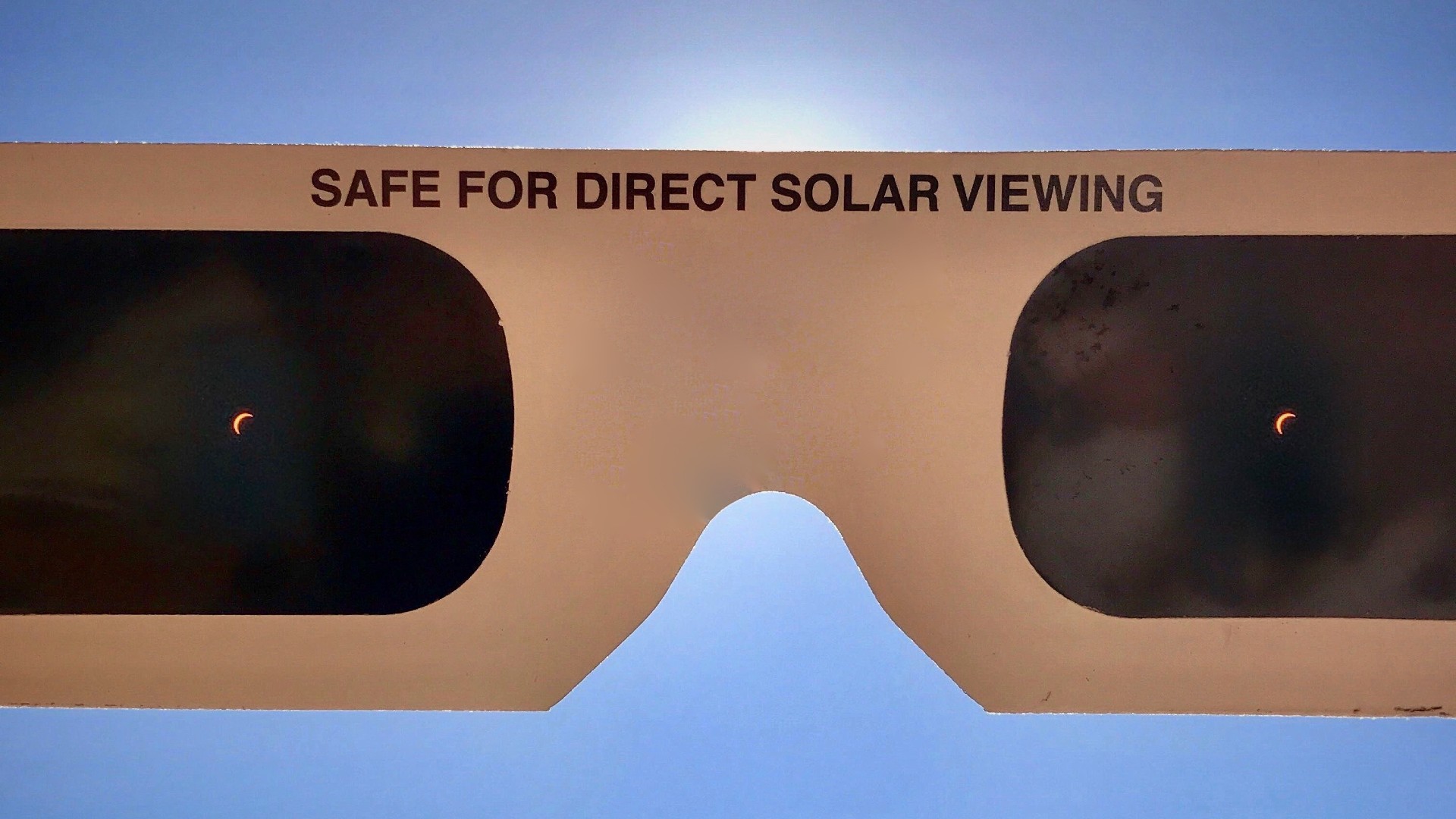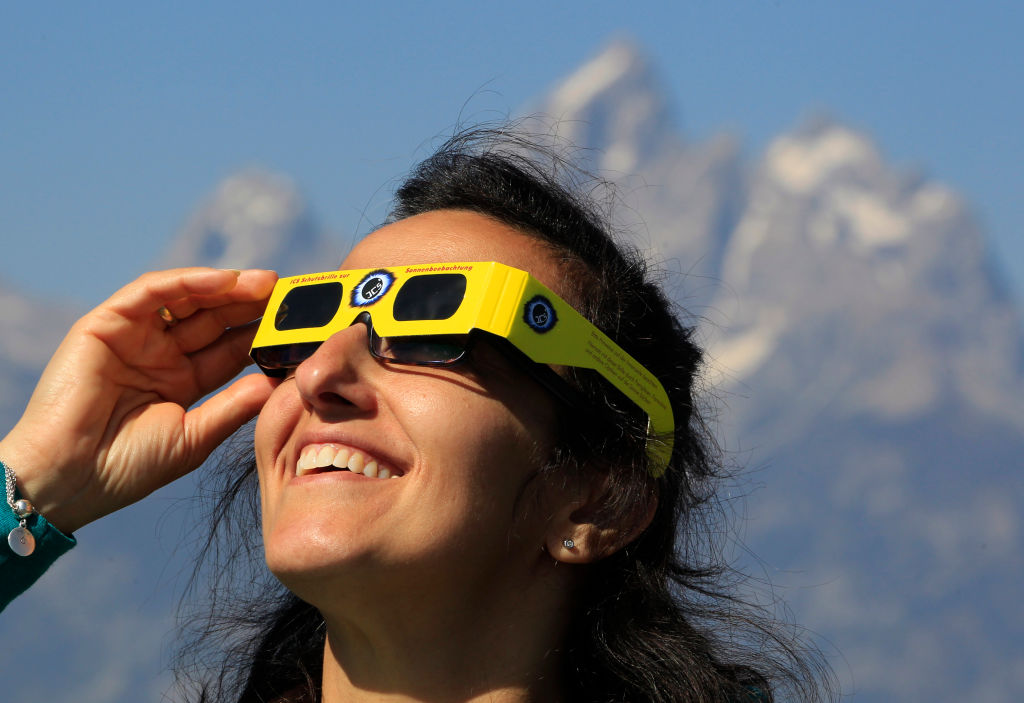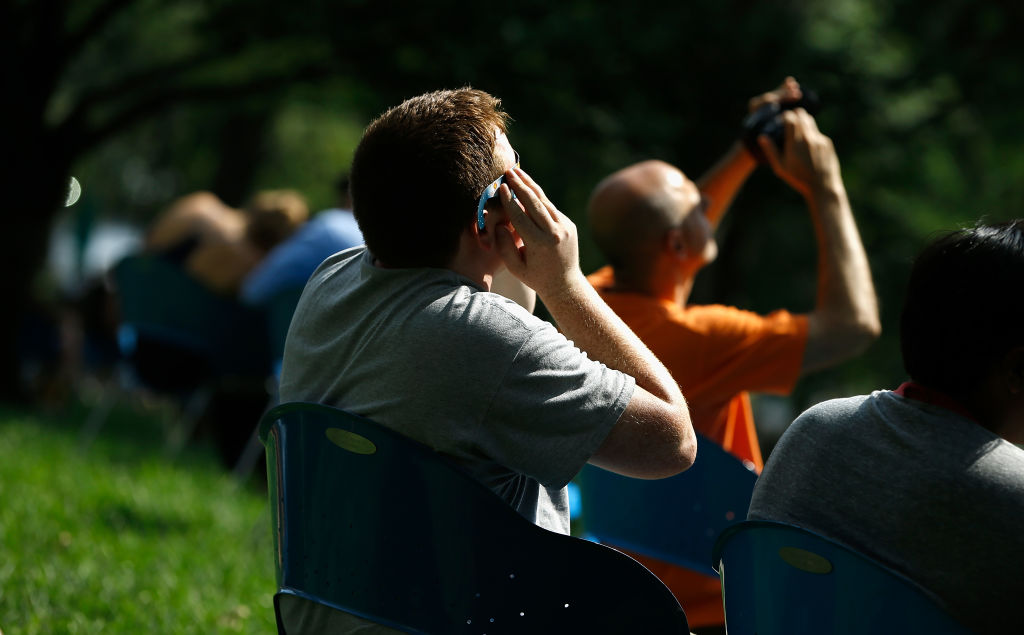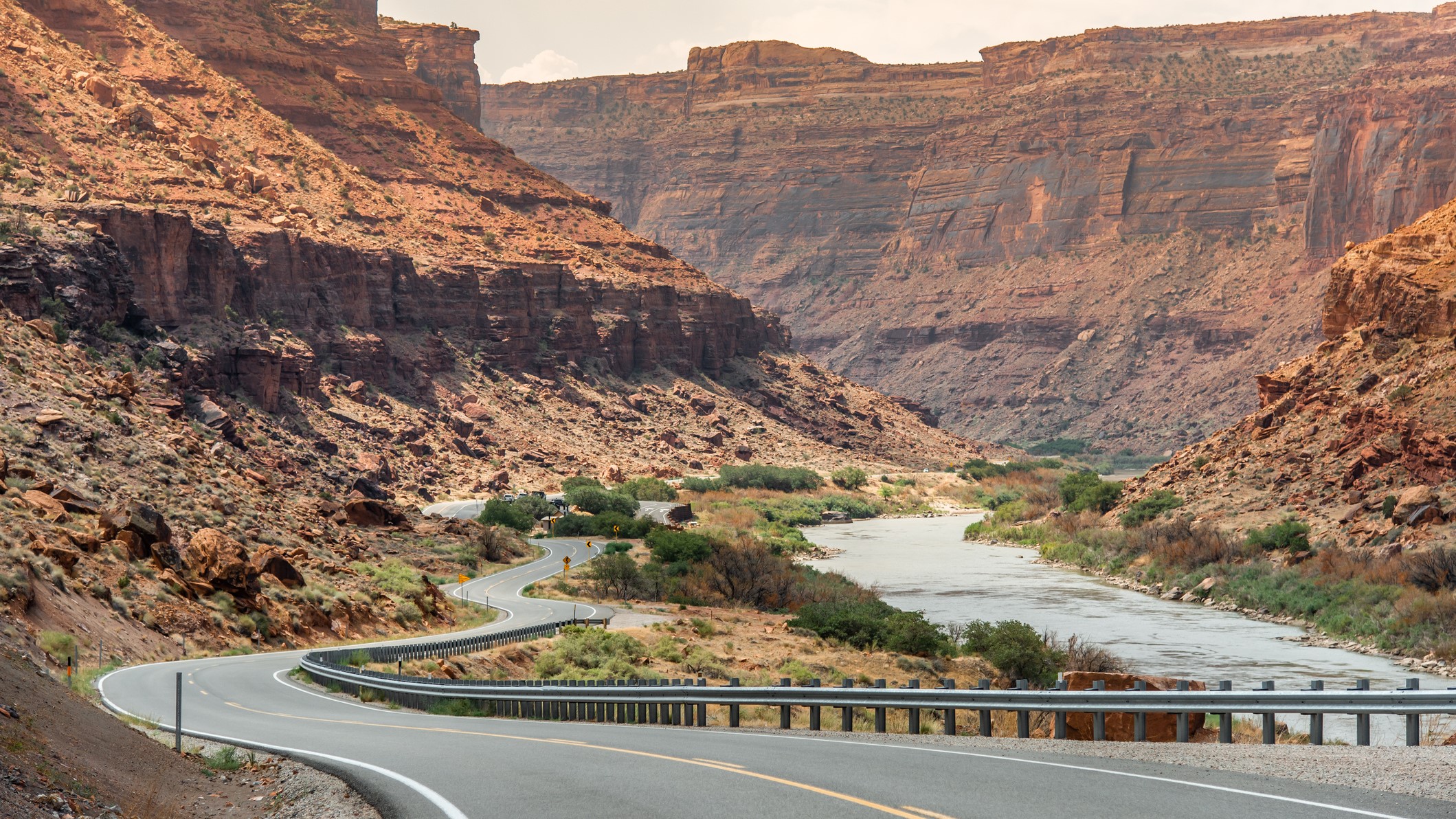8 tips to safely watch the annular solar eclipse on Oct. 14
From eye safety to backcountry travel, here's how to stay out of harm's way during the upcoming 'ring of fire' solar eclipse.

A solar eclipse will be visible across North, Central and South America on Oct. 14, and it promises to be a landmark event.
Everyone in the U.S. will see a partial solar eclipse, with those farther west seeing a much larger chunk taken out of the sun.
Only from a path 125 miles (200 kilometers) wide running from Oregon through Texas — via California, Idaho, Nevada, Arizona, Utah, Colorado and New Mexico — will observers get to see a "ring of fire," as a slightly smaller-than-average new moon obscures about 90% of the sun for up to almost five minutes (annularity). Our annular solar eclipse 2023 guide tells you everything you need to know about North America's "ring of fire" eclipse.
For some specific regions — notably the high-elevation Colorado Plateau, where many eclipse-chasers will head — there are some particular safety issues to be aware of. However, everyone in the continent needs to be aware of how to stay safe on eclipse day for an event that will take up to about three hours, depending on the exact location.
Related: How to observe the sun safely (and what to look for)
While this is an exciting and unique experience, it's crucial to prioritize safety when observing the eclipse. Here are eight tips to ensure safe and enjoyable viewing of this exciting and unique event, which won't happen again in the U.S. until June 21, 2039 in Alaska.
1. Use eye protection
Everyone knows that solar eclipse glasses are designed specifically to safely look at partial eclipses, but there's something about this event that makes that advice even more important.
Breaking space news, the latest updates on rocket launches, skywatching events and more!
"You must not look at the sun without protection, because it is dangerously bright," said Rick Feinberg, project manager of the AAS Solar Eclipse Task Force at the American Astronomical Society, which has a useful Suppliers of Safe Solar Filters & Viewers page for purchasing products that comply with the ISO 12312-2 international standard.
"There will be no time this October when anybody can look directly at the sun without eye protection." Feinberg continued. That's different from a total solar eclipse — coming up on April 8, 2024 in North America — when the brief totality is safe to look at with the naked eye. That absolutely does not apply on Oct. 14.
2. Observe away from busy roads
The biggest cities inside the path will be Eugene in Oregon, Albuquerque in New Mexico and San Antonio in Texas. However, many U.S. cities will see a substantial partia eclipse. In Los Angeles, for example, the sun will be 71% obscured. And the figures in Denver and Houston will be 79% and 85%, respectively.
If you plan to watch the solar eclipse from a city, make sure you find a safe observing location. You can, of course, watch it from absolutely anywhere, but during these events, many office workers tend to stream out into the street to take a peek. With solar eclipse glasses making it impossible to see anything other than the sun, roads and busy sidewalks are potentially dangerous. The best, easiest and safest eclipse-observing site is an open space or at an organized viewing event, with the bonus that sight lines will have been taken into account.
3. Watch the weather
Eclipse-chasers typically read Eclipsophile for advice on where to observe solar eclipses under clear skies, with meteorologist Jay Anderson's weatherdesk so useful as eclipse day draws closer.
However, if you're in the U.S. Southwest, you'll want to watch the weather for more reasons than merely a good view of the "ring of fire." In dry areas, a big problem can be flash floods, with the effects of August's Hurricane Hilary shuttering parts of national parks including California's Death Valley National Park, Joshua Tree National Park, Mojave National Preserve and Manzanar National Historic Site and Nevada's Lake Mead National Recreation Area, according to Outside magazine.
All of those spots could be on the itineraries of eclipse-chasers on a road trip to see the ring of fire. In mid-September, parts of New Mexico's Chaco Canyon National Historic Park — within the central path of annularity — were closed for a few days after flooding, according to KRQE.
4. Protect your skin
It makes sense that, if you're going to stand in the glare of the sun for a few hours, you need to put sunscreen on. However, it's even more important to do so if you are in or close to the path of annularity through some of the nine lucky U.S. states to see the ring of fire.
Much of Arizona, Utah, Colorado and New Mexico are on the Colorado Plateau, a high-elevation area where sunlight has less of Earth's atmosphere to filter through, meaning more intense UV rays. Wear sunscreen, a hat and loose clothing made from ultraviolet protection factor fabrics (UPF 50 factor is the best) to prevent skin damage. In this region, mild altitude sickness may also be an issue for some.
5. Plan ahead and drive carefully
Avoid rushing to a location just before the event is about the start.
Among dedicated eclipse-chasers, the main reason to relocate at the last minute is usually bad weather. However, for most viewers of the partial eclipse, it's more likely to just be poor information. You can check an interactive eclipse map and get the eclipse schedules for your location in advance and, armed with these specific timings, make a plan.
Related: Annular solar eclipse 2023: How to watch in person and online
6. Keep hydrated
It's surprising how dehydrated one can get when observing an entire solar eclipse. It will depend on the weather where you watch from, of course, but the entire central path through the U.S. Southwest can experience dangerously high temperatures, and heat exhaustion and heat stroke are risks.
When touring the desert and high-elevation regions of northern California, Nevada, southwestern Idaho, Utah, northeastern Arizona, southwestern Colorado, New Mexico and Texas, always carry lots of water and consider traveling with water purification tablets and a portable water filter.
7. Be prepared for backcountry travel
With clear skies likely for most of the U.S. Southwest, travelers have been busy planning road trips to the central path to see the ring of fire. However, the best places to view from in theory may not be quite what eclipse-chasers expect.
Small towns marked on maps may, in reality, be nothing more than a small store. In backcountry areas of Nevada, Utah, Arizona, Colorado, New Mexico and Texas, facilities and gas stations are few. So bring everything you need — certainly a full tank of fuel, but also food, water, cash and toilet paper — because many small towns won't be expecting anyone. Wherever you go, always Visit With Respect.
8. Avoid closed parks and monuments
It was announced in September that Monument Valley Navajo Tribal Park will be closed for the eclipse between 8:00 a.m. and 1:00 p.m. on Oct. 14. Ditto the Four Corners National Monument and offices in the Tséyi' Diné Heritage Area-Cottonwood Campground (TDHA-CC) within Canyon de Chelly National Monument.
All are part of the Navajo Nation in northeastern Arizona, northwestern New Mexico and southeastern Utah, where many tribal members will be inside fasting and praying during what's considered the death and rebirth of the sun (Jóhonaa'éí daaztsą́, which means "the sun is dead"). Navajo culture should be respected and closed monuments avoided; Monument Valley Navajo Tribal Park, in particular, could potentially see many unwanted people arriving, which could cause problems.

Jamie is an experienced science, technology and travel journalist and stargazer who writes about exploring the night sky, solar and lunar eclipses, moon-gazing, astro-travel, astronomy and space exploration. He is the editor of WhenIsTheNextEclipse.com and author of A Stargazing Program For Beginners, and is a senior contributor at Forbes. His special skill is turning tech-babble into plain English.




